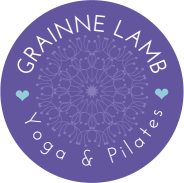I am sometimes asked in classes how and why the use of the breath differs in Yoga and Pilates so I have put together the following to provide a short yet informative summary of the differences between the use of the breath in Yoga and Pilates.
In Pilates it is believed that a relaxed and full breath pattern encourages the Pilates participant to focus and concentrate on each exercise. The breath pattern (in through the nostrils and out through lightly pursed lips) should contribute to the execution of each movement. A 3 dimensional breath should be engaged during a Pilates session expanding into the back and side ribs whilst lightly contracting the core muscles of the torso (Transverse Abdominis (sides of torso), Obliques (sides of torso), pelvic floor (muscles you engage to stop yourself going to the loo) and Multifidis (in the back – either side of the spine)) . It is also important to inflate the lower lobes of the lungs to allow more efficient oxygenation of the blood. So, for example in the Pilates Spine Twist (the first movement to introduce rotation) the Pilates participant rotates to each side on an exhale returning to centre on an inhale to begin with but may progress to reverse this breath pattern to increase the feeling of length in the spine. The Saw (which combines a rotation with a forward bend) is a more complex and physically challenging movement so the rotation begins on an inhale with the forward bend beginning on the exhale. Re-lengthening the spine occurs on an inhale and then we exhale back to the start position. So in general, the more challenging movement is on an exhale which makes sense as most of us can breathe out for longer than we can breathe in for.
The breath is the essence of yoga. The literal translation of the word yoga from Sanskrit means union and this refers to the union of the mind, body and breath. The breath leads the movement into and out of each asana (posture) as well as forming our focus when we are in a static yoga asana holding the posture for a number of breaths. If we are not working with the breath, or working towards doing so, then we are not truly practising yoga. It is the focus on the breath combined with the movement which takes us to a practice of yoga rather than a series of stretches. This is why we begin our yoga practice with a focus on the breath which helps bring the mind to a point of stillness and relaxation. In yoga we are aiming to release tension and lengthen into the asana so, for example, in a dynamic Setu Bandha (Bridge) we peel the hips and spine away from the mat (the expansive part of the movement) on an inhalation, waiting for the body to tell us when it needs to exhale and then beginning our peel back down through the spine to the mat on an exhalation, returning to the starting position.
If you are an experienced Pilates practitioner trying yoga or an experienced Yogi trying Pilates and are unsure about the breathing, do not be concerned. This is common and as long as you keep breathing, focus on the instruction and ensure your breath is comfortable and not forced, your breathing technique will improve along with your Pilates or yoga practice.
